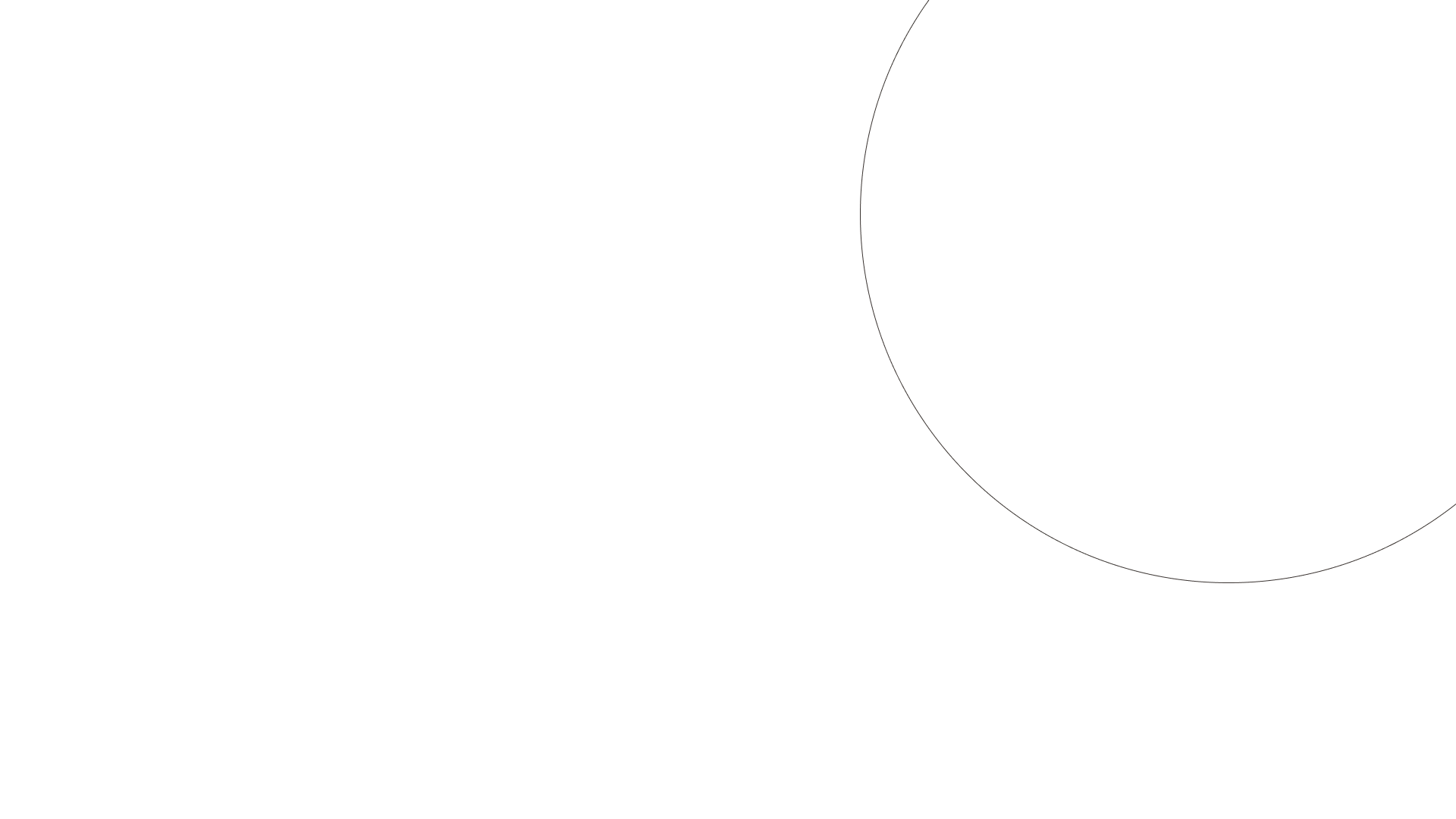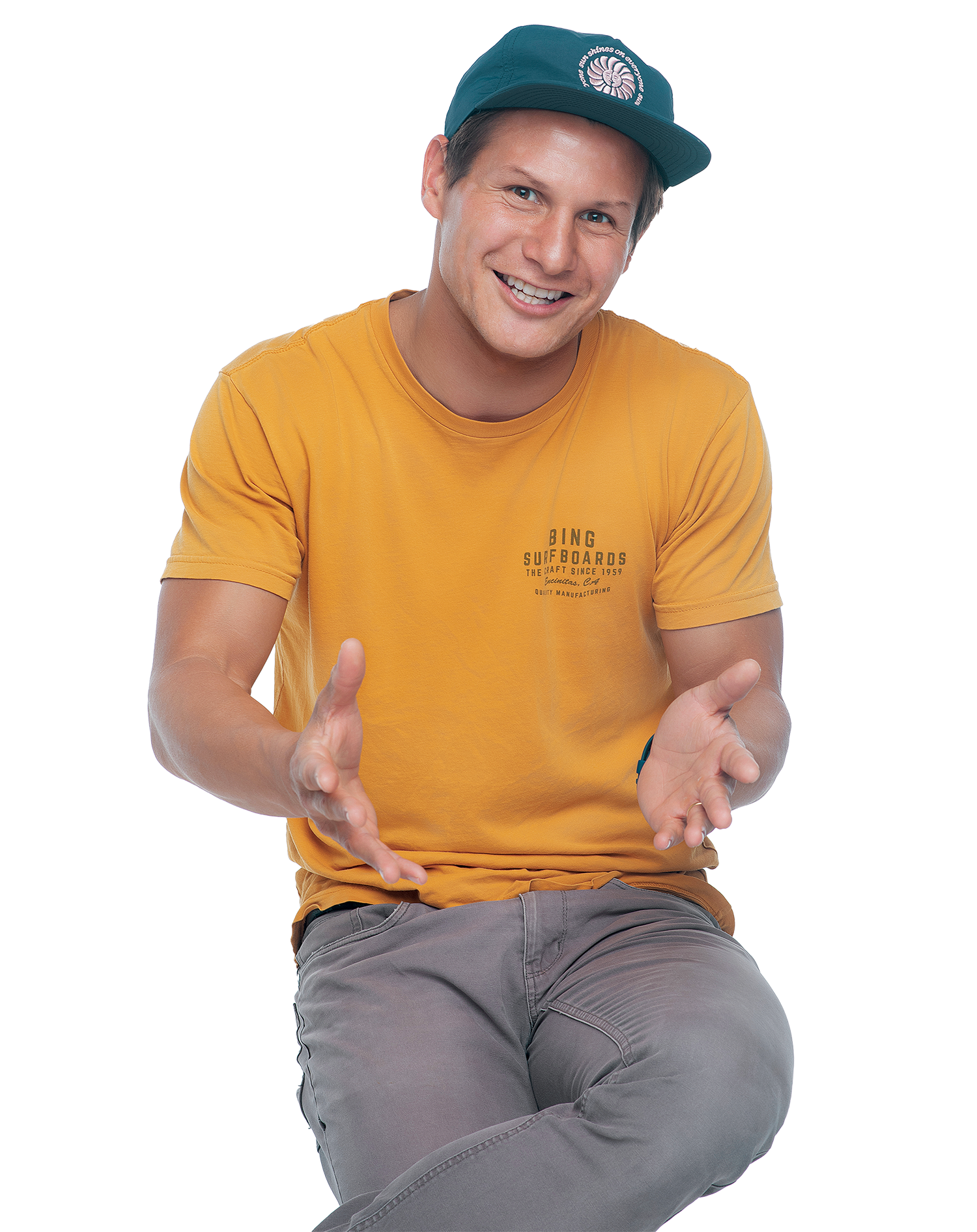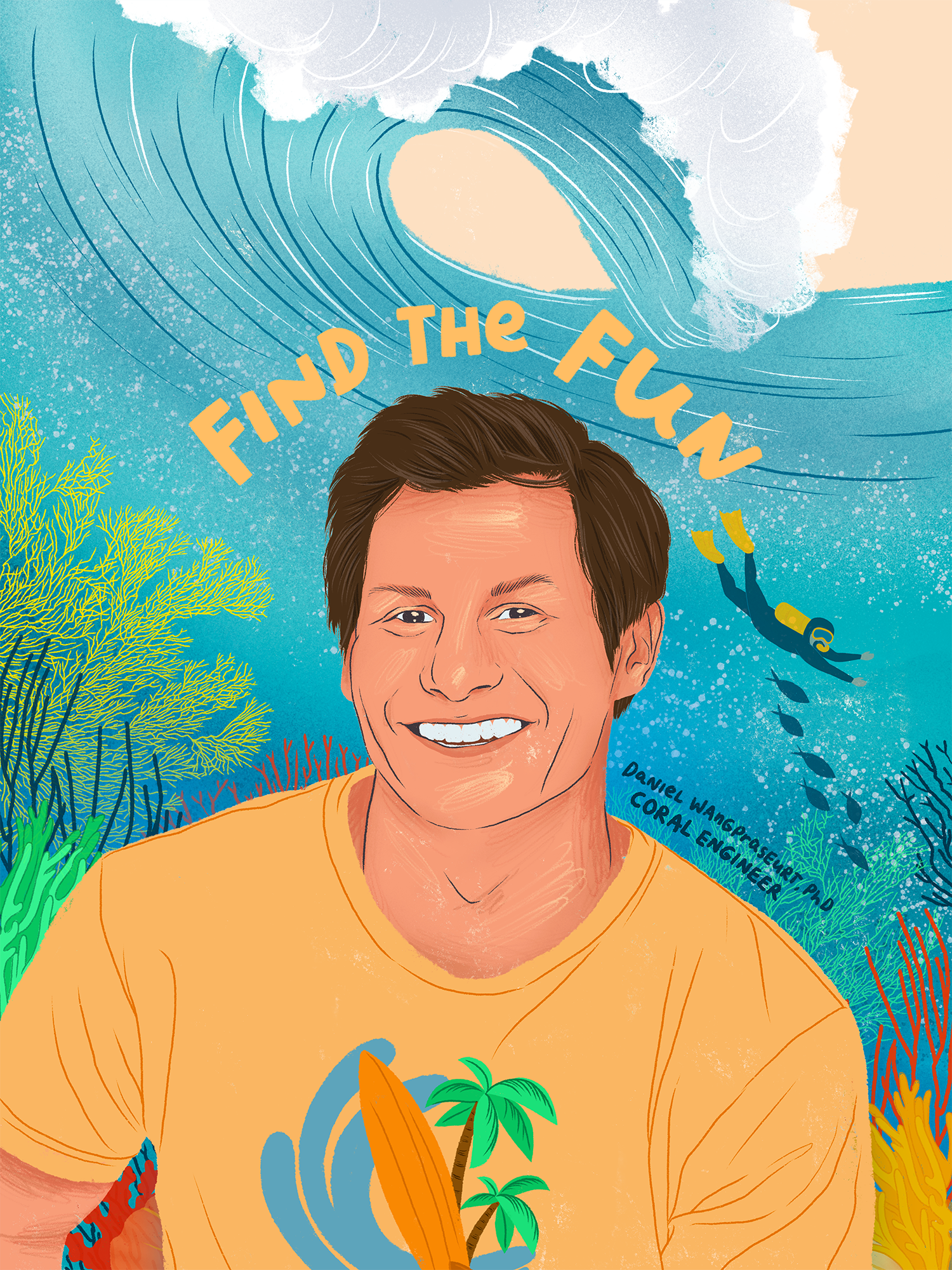
Section Styles spotlight-header
I am a
Coral engineer
Daniel Wangpraseurt, PhD
Presented by SUSTAINABLE OCEAN ALLIANCECoral reefs around the world are dying due to environmental stressors.
As a coral engineer, I use 3D printing and engineering to design the future of coral reefs.
MY WORK SETTING
Indoor vs. Outdoor
I wish I could spend all of my time in the ocean, but the reality is more balanced.
People vs. Alone
I spend most of my time collaborating with other people.
Creative vs. Defined
Most of my work is creative, while I have some structure to each day.
-
I use a wide range of tools and skills to develop new structures that mimic coral reefs. These structures might be artificial, but when we're successful, they become living parts of a reef. Using a mix of chemistry, biology, and engineering, my team is 3D printing these coral reef-like structures and experimenting with ways to use them to host different kinds of algae and bacteria, similar to what happens in nature.
-
From data analysis to bioengineering, everyone on my team has a special expertise that they use to literally bring these 3D printed structures to life. There are countless options for materials in the world, so part of our job is to test which materials are the best to create 3D printed artificial corals. We also test which algae and bacteria will thrive in the artificial conditions. We then put our experiments out in the ocean to see if they will survive under real world conditions.
-
Coral reefs around the world are dying at very dangerous rates. These reefs aren't just beautiful, they are also the backbone of crucial ecosystems. They provide habitats for countless fish, invertebrate, and shark species, and are the most biodiverse habitat in the ocean. For humans, they act as natural buffers from storm and wave action for shorelines and provide fisheries and recreation services. Life on earth would be altered irreparably without them, so our work is an important part of finding ways to protect, conserve, and restore them.
my work needsEssential Skills:
IMAGINATION
There is no roadmap for solving sustainability issues like restoring coral reefs. I’m constantly dreaming up and experimenting with new ideas.
OPENNESS
To do something that nobody has tried before, you have to be open to unexpected solutions. I have to think outside the box and accept the uncertainty of new experiments.
COLLABORATION
Complex problems often require complex solutions – which can mean working with a lot of different people. The key is to find ways to leverage everyone’s strengths.
COMMUNICATION
I work with people from many different countries, disciplines, and perspectives. It’s important for me to develop effective skills for exchanging ideas and resolving issues.
DAYS IN THE LIFE
Days in the Life
Come along and explore what three days at my job might look like!
How I Work
Check out what my place of work looks like on an average day.
This is what my workspace looks like!
Coffee and snacks. I keep a quick energy boost within reach.
A bookshelf. I reference insights from fields like bioengineering, bio-inspired design, and marine biology.
A laptop. My set-up has a monitor, keyboard, and mouse.
My surfboard. Whenever I get a chance, I go for a quick surf during my lunch break.
A poster of me scuba diving at a coral reef in the Red Sea. I love being surrounded my memories of my adventures.

Did you know...Coral reefs are a critical part of our food systems, and they’re in serious danger.
Coral reefs aren’t just one organism, but thousands. The coral itself is built by thousands of coral polyps, which are tiny animals that have a symbiotic relationship with algae called zooxanthellae. These unique organisms excrete a substance called calcium carbonate. This substance creates the shape and structure you think of when you imagine a coral, and when they grow in a healthy environment, they can become the enormous formations you see, like the Great Barrier Reef. These structures are the backbone of some of the most diverse and critical ecosystems in all of the oceans. They’re the home for countless fish, crustaceans, plants, and other sea life – much of which provides food and sustenance to us. Without these reefs, both marine life and human life would suffer.
As our planet becomes stressed by factors like climate change and pollution, these beautiful and important coral reefs are becoming endangered. Scientists estimate that 70-90% of coral reefs could die within the next 20 years. This number is shocking. Fortunately, there are some coral species that seem to be more resilient than others, and perhaps they will survive. This is also why scientists and engineers all around the world are fighting to find solutions. There are also things we all can do to help. We can pay close attention to our plastic and chemical waste and help raise awareness about the problems. We can also be careful not to kick or break corals if we go visit them. To truly protect and restore corals, we’re going to need collaborative solutions from across science, engineering, policy, and culture.
Rewarding
These are the parts of my job I find particularly rewarding.
Scuba diving and spending time underwater with coral reefs.
Exploring new disciplines without a clear roadmap of what to do next.
But everyone is different! Drag the circles to place them where you rate them.
Challenging
These are the parts of my job I find particularly challenging.
Writing and editing publications after the field work is done.
Spending time working on a computer or in the lab.
Section Styles movable
These are the people I work with:
Engineers
My main collaborators are nanoengineers. They work at tiny scales and help with all of the 3D printing.
Marine Scientists
I learn from and collaborate with marine scientists who specialize in disciplines like biology, chemistry, physics, and geology—depending on what project I’m working on.
Material Scientists
In order to create artificial coral reefs that can survive underwater, I need a team of material scientists who understand what materials to make them out of.
Looking for teacher resources?
PHOTOGRAPHER: Nandi Nefertiti • Illustrator: Eira Gemanil© 2024 THE PLENARY, CO. ALL RIGHTS RESERVED. TERMS. PRIVACY.This is a brand new site! See an issue? Let us know.


















